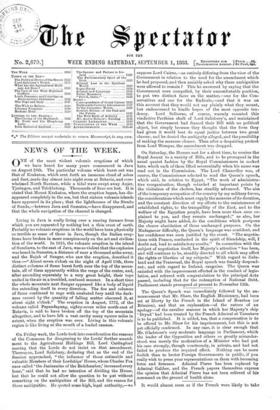Living in Java is really living over a roaring furnace
from which you are separated by nothing but a thin crust of earth. Probably no volcanic eruptions in the world have been physically so terrible as some of those in Java, though the Italian erup- tions have broken in more conspicuously on the art and civilisa- tion of the world. In 1815, the volcanic eruption in the island of Sumbawa, to the east of Java, was so violent that the explosion was heard in Sumatra, a distance of near a thousand miles away, and the Rajah of Sanger, who saw the eruption, described it thus :—" About seven o'clock on the night of April 10th, three distinct columns of flame burst forth near the top of the moun- tain, all of them apparently within the verge of the crater, and, after ascending separately to a very great height, their tops united in the air in a troubled, confused manner. In a short time the whole mountain next Sanger appeared like a body of liquid fire extending itself in every direction. The fire and columns of flame continued to rage with unabated fury until the dark- ness caused by the quantity of falling matter obscured it, at about eight o'clock." The eruption in August, 1772, of the volcano called Papandayang, eighty-seven miles south-east of Batavia, is said to have broken off the top of the mountain altogether, and to have left a vast cavity many square miles in extent, when the eruption was over. Living in thin volcanic region is like living at the month of a loaded cannon.


































